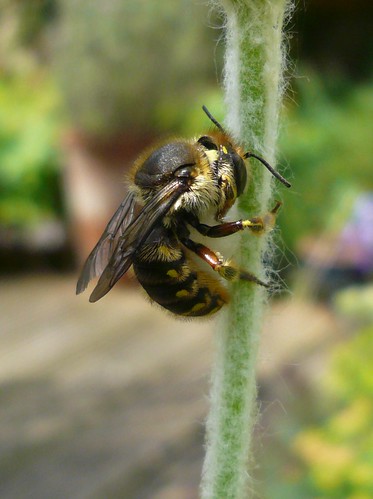When I first spotted this fly enjoying Ajuga nectar one spring, I had to give it a double-take. At first I thought it was two flies mating, but on closer inspection I realised that it had this extraordinary and distinctive protrusion in the front of the head. Unmistakable and easy to identify.
Tuesday 29 September 2009
Fly (Rhingia campestris)
Drone Fly

Drone Fly, originally uploaded by Pipsissiwa.
A beautiful example of mimicry. This is a fly, but it looks a lot like a bee to avoid getting eaten. It has no sting. The single pair of wings coupled with haltares (balance organs under each wing not clearly visible in this pic) and the eyes give it away. This is actually one of the hoverflies, and is very acrobatic in ways that bees generally are not.
Fly

Fly, originally uploaded by Pipsissiwa.
I am unsure of the species of this nondescript grey, red-eyed fly, but I was thrilled by the photo opportunity presented by its choice of resting place.
Mating Flies
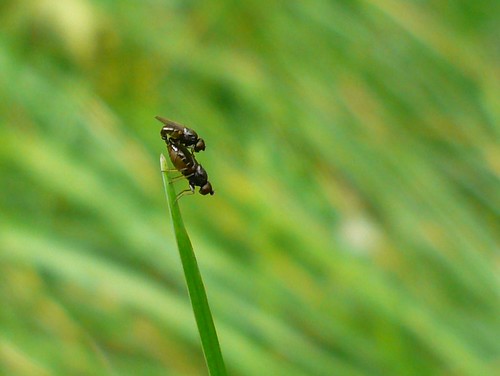
Mating Flies, originally uploaded by Pipsissiwa.
Ah, the cycle of life. I see these tiny flies all the time in the summer, usually sitting right at the tip of blades of grass as this pair are, presumably waiting for a mate. Notice how much smaller the male is than the female.
Greenbottle Fly (Lucillia caesar)

Greenbottle Fly (Lucillia caesar), originally uploaded by Pipsissiwa.
Everyone is familiar with greenbottles and bluebottles, your standard summer flies that buzz around the living room windows. What we typically overlook is how beautiful these insects actually are. The metallic green colouring is amazingly in sunlight, and contrasts nicely with the deep red compound eyes.
Speckled Green Cricket (Leptophyes punctatissima) - Female
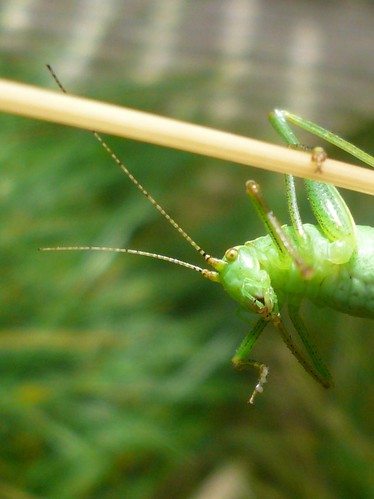
Speckled Green Cricket (Leptophyes punctatissima) - Female, originally uploaded by Pipsissiwa.
Identification via Chinery / McGavin / Marshall & Haes.
Speckled Green Cricket Nymph (Leptophyes punctatissima)

Speckled Green Cricket Nymph, originally uploaded by Pipsissiwa.
Identification via Chinery / McGavin / Marshall & Haes.
These crickets are a common sight in my garden from mid-spring. This is an immature individual. This one was drinking from a rain droplet on the leaf.
Speckled Green Cricket Nymph (Leptophyes punctatissima)
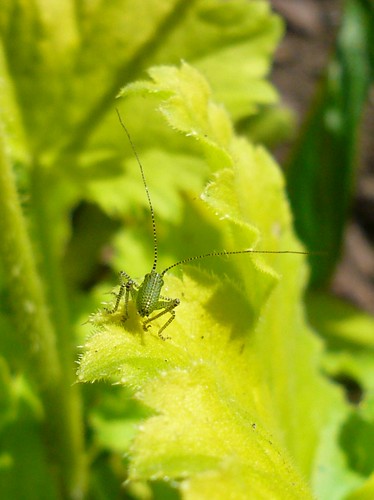
Speckled Green Cricket Nymph, originally uploaded by Pipsissiwa.
Identification via Chinery / McGavin / Marshall & Haes.
When very young these crickets are extremely darkly and densely spotted, but this reduces with each moult until they are primarily green with faint spotting. They are a nightmare to photograph well because as soon as you get close they instinctively turn their back. Sneaky techniques have to be used to make them face the camera, which don't always work :)
Bumblebee
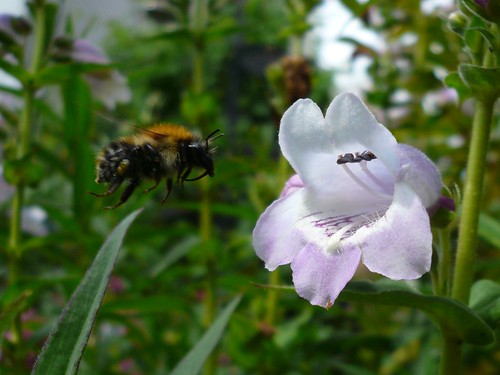
Bumblebee, originally uploaded by Pipsissiwa.
This was one of those lucky shots, capturing this lovely bee on approach to a penstemon flower, tongue out ready. They love to tunnel deep into these tubular flowers to reach the nectar and getting covered in pollen as they do.
Wool Carder Bee (Anthidium manicatum)
This bee collects fibres from woolly stemmed plants to line its nest.
Bumblebee (Bombus terrestris)
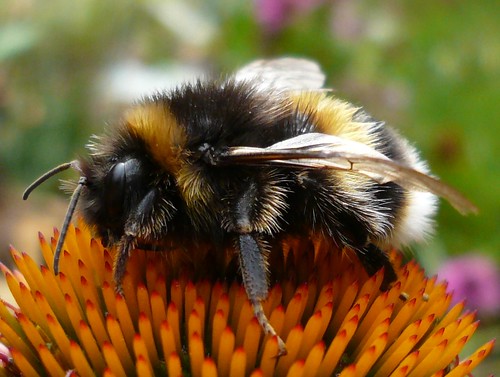
Bumblebee (Bombus terrestris), originally uploaded by Pipsissiwa.
This very large bee was drying out after some rain. I took advantage of its wooziness to get some smashing photos, and it even crawled onto my hand before flying off.
Subscribe to:
Posts (Atom)


